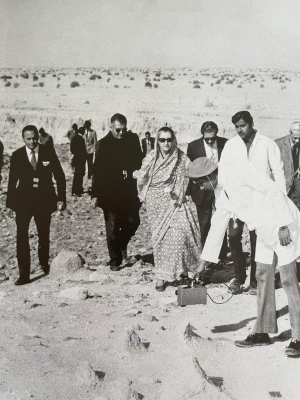
India conducted five nuclear bomb test explosions at the Indian Army’s Pokhran Test Range in May 1998 and they are known as the Pokhran-Il tests. It was the second time India conducted nuclear testing.
The first test was code-named Smiling Buddha, and it was conducted in May 1974. R. Chidambaram, who was the chairman of the Atomic Energy Commission, Dr. APJ Abdul Kalam, who was also the Scientific Adviser to the Defence Minister, and Anil Kakodkar, who was the Director of the Bhabha Atomic Research Centre, were the most important figures in the Pokhran-Il tests. The tests caused the U.S to impose sanctions against India. Some other Western countries also did the same.
Dr. Kalam supervised the Pokhran-Il explosions as the chief of the Defence Research and Development Organisation. He camped in the Thar Desert for over a fortnight and said the testing was a “defining moment” in the history of India. He opined that the only other defining moment was adopting the path of economic liberalization in 1991.
On May 11, 2015, the ‘Missile Man of India’ tweeted that “Today, I remember the hot day of 1998 at Pokhran: 53C. When most of the world was sleeping, India’s nuclear era emerged.”
After the successful test, the Bhabha Atomic Research Centre had presented Dr. Kalam with a memento of a banyan tree bonsai with the statue of a smiling Buddha under it. “The Buddha has smiled” was the code used by scientists in 1974 to declare that the nuclear test was successful.
The Pokhran tests achieved their main objective of giving India the capacity to build fission and thermonuclear weapons with yields up to 200 kilotons. Dr. Anil Kakodkar, the then-Chairman of the Indian Atomic Energy Commission described each of the explosions of Pokhran-II to be “equivalent to several tests carried out by other nuclear weapon states over decades”.
Picture Credit : Google




